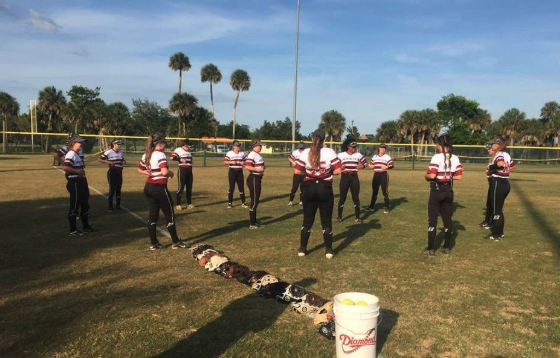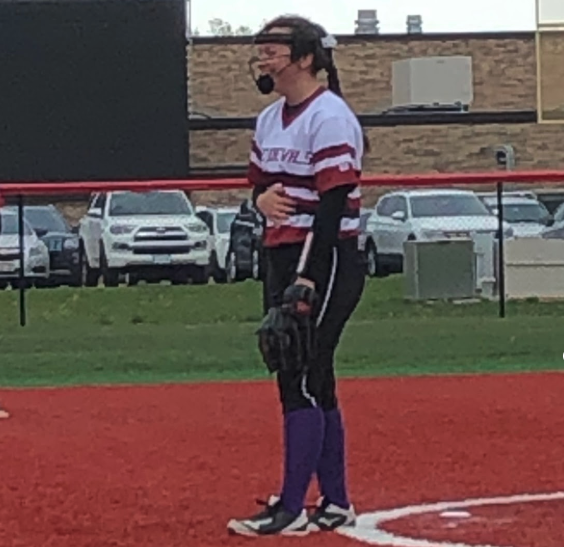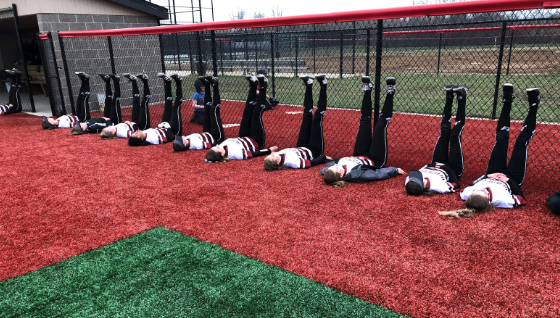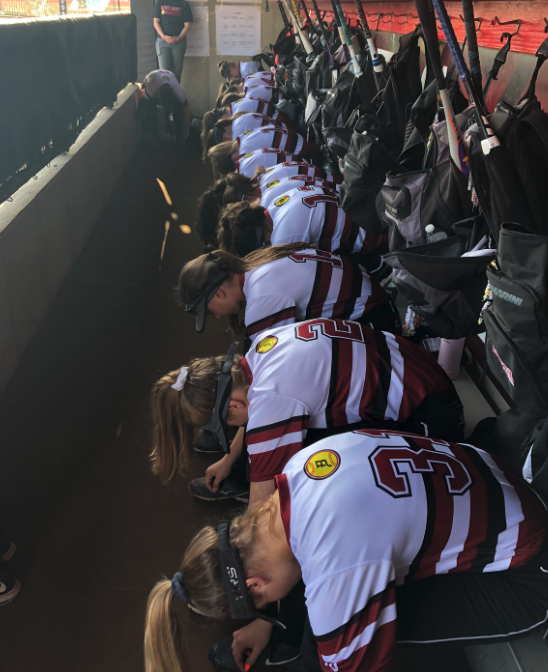Breathing to Perform, Not Survive
Why can’t every athlete perform under pressure or stress? A primary reason why some athletes excel under pressure and others crumble is due to their ability to breathe. Everybody has the ability to breathe, of course, but the way an athlete breathes impacts the way they perform.
We live in a day and age where information is literally at our fingertips. Coaches like Chris Korfist and Cal Dietz find ways to improve performance physically, while gurus like Steve Jones and Joshua Metcalf are experts at mentally improving performance.
For athletes to perform their best when it counts, physical and mental preparation is critical. Learning how to breathe correctly requires no skill, but it does take practice. When athletes in stressful or critical situations start to panic, you will hear their coaches say to slow down your breathing, calm down, or breathe slowly. But when athletes struggle to slow down their breathing or don’t execute what is being asked of them, many/most coaches conclude that athletes can’t handle pressure or aren’t mentally tough. Rather than thinking an athlete cannot handle pressure situations or considering them mentally weak, perhaps the underlying issue is that the athletes are simply not breathing correctly.
We were all born as belly breathers (in through the nose), but through time a lot of us become chest breathers (in through the mouth). When we breathe through our nose, we are focused on breathing which helps maintain a low heart rate. This, in turn, increases our ability to cognitively perform under pressure, along while reducing fatigue.
Skills that are second nature in a non-stressful situation are diminished when athletes have trouble breathing. You can see this when you see athletes drop a wide open pass or swing at a bad pitch. The athletes start experiencing tunnel vision and their reaction time suffers. No matter how much vision training or mental preparation athletes have, if they are not properly breathing to perform – instead of simply to survive – they will not be successful.
“Fatigue makes cowards of us all.- Vince Lombardi”
New Sport, Same Principles
If you told me that this past spring I would be coaching on a diamond instead of a track, I would have told you that you’re crazy. I hadn’t spent my spring on a diamond since Little League 20 years ago, long before I was introduced to a shot put on my gravel driveway. Due to the responsibilities of becoming a first-time parent, I was unable to coach track in the spring of 2019. However, from a coaching standpoint, things could not have worked out better. In February, I decided to be an assistant softball coach for John Ruffolo at Kenosha Bradford. John and I had known each other when my wife served as an assistant coach in his program. He didn’t pick me to coach with him because of my knowledge of softball (although I now know what “fungo” means), but because of my success with athletic performance.
Since the summer of 2017, I have been helping out periodically with the softball off-season training program with my wife. We put an emphasis on speed for the softball girls, testing flying 10’s over the summer and right before the season. The improvement from the Flying 10’s were incredible. Not only did the girls improve, but the top four times were faster than the girls I had on my state qualifying 4x400m relay in track the year before.
Going into the season, we knew we had speed and strength, so the goal was to maintain that speed and strength while staying healthy. During our first week of the season, I introduced Reflexive Performance Reset (RPR) to the whole team in a classroom setting. RPR features 12 wakeup drills that your athletes can do to themselves that put their bodies into a performance state.

I educated the girls on the importance of breathing along with putting them through the buy-in drills of rotation, psoas, flexibility through hamstring, and lateral sling. The girls had instant buy-in and started doing the wake-up drills to start every practice.
Besides doing RPR we added a ready-position movement into our warm up to increase their ability to make plays on the ball while staying low in their ready position. Holding these ready positions, like an isometric exercise, helped improve their strength and speed from that position, from which all softball plays are made.
Looking at Performance Through the Breathing Lens
As I was keeping stats during our first game of the year, I noted the breathing patterns of the girls in stressful situations. One stressed-out athlete was breathing through her chest. As most coaches were offering softball-specific advice, I was yelling out for her to belly breathe.
When we introduced belly breathing and talked about its importance, the athletes felt the difference and started every practice with belly breathing. But when we ended up in a stressful situation, the athletes reverted back to chest breathing. Our pitcher would get to a 3-2 count, chest breath, and throw her next pitch well out of the strike zone.
Not only did I start watching our players’ breathing, but I also started paying attention to our opponents as well. I quickly realized that it wasn’t just our girls who would chest breath, the other team was doing it also. I started observing athletes in pressure situations, when the counts would get to 3-1 or 3-2, and watch the players’ breathing patterns. The easiest indicator of chest breathing is the shoulders, which will rise up when taking big chest breath.
We had an opportunity to win the first game. We had runners in scoring position with two outs and a full count (the score was tied 5-5 bottom of the 8th). Between pitches, Coach Ruffolo told our batter to take two belly breaths before stepping back in. She took one big chest breath, stepped into the batter’s box, and struck out swinging.
As I talked with Coach Ruffolo after the game, I told him I would like to use the first part of practice to go over breathing and demonstrate how important breathing truly is because our girls knew it was important but didn’t show that they believed it was important. So the next day at practice, our girls did RPR, and then I brought out our three senior team captains and the player who struck out swinging after taking a chest breath.
As I called the four girls out to the middle of the circle, I had the girls partner up and test each other’s strength by putting their arm out. The girls first did three belly breaths and tested. Then they did three chest breaths and tested. After losing their strength and thinking I was doing Voodoo, I told them to take three belly breaths and retest. After the belly breathing they regained their strength right away.
I then had the four girls that I called out stand in a straight line and put their right arm around each other. I told them all to belly breathe. I tested the girl’s arm on the the far right side of the chain and she was strong. Then I told the girls to belly breathe again and look to their right. As they were looking to their right, I showed a note card to the girl on the far left — the one who struck out the night before — and told her to read it. On the note was a description of the situation from the night before. She read it and was told to chest breathe. As she chest breathed, I tested the girl at the fair right again, and she lost her strength.
It was at that moment our team went from knowing the power of belly breathing to believing in the power of belly breathing. Beginning there and then, breathing became an integral part of practice. We practiced and talked about breathing as much as any other softball skills. We practiced breathing in all aspects of the game: pitching, hitting and fielding.
Failure to breathe to perform early in the year led to success later in the year. As our season went on, our athletes believed more and more in the power of breathing. We had freshman reminding seniors to breathe during stressful situations.

Our pitchers would be on the mound with their hand on their stomach, belly breathing as they were getting the pitch call. Our catcher would put her hand on her belly under her chest protector if she was starting to get anxious behind the plate. In stressful situations, you would hear the girls say to each other, “Just breathe.”

After stressful games, we had the girls lie on their back and put their feet up on the fence and belly breathe for two minutes as a method of recovery. This routine helped the girls come to a calm state to help aid the recovery process for our game for the next day (Cal Dietz and Dan Fichter have an advanced method of this that they shared at TFC). In the heart of softball season you get to the point where you play a game every day, and this method of recovery was successful for us. On three of the four games that followed this post-game recovery breathing, we beat the next team by the slaughter rule. The one game we did not win after we did this was the state semifinal game where we lost 4-0 to the eventual state champs.
Although we had lost the game to the eventual state champs, our girls played fearless with cleared minds and did not let the environment impact the way they played. After the game, the players told me that me they felt like it was just another game and they had fun playing on the big stage. I loved hearing that because I know they really enjoyed the experience and were able to play in the moment.

What I Learned
Breathing for performance has to be intentionally taught and practiced daily if you want your athletes to seize the moment. Demonstrating once and just saying “Make sure you breathe” will not integrate the skill of breathing to perform. Working with Coach Ruffolo opened my eyes to getting optimal performance out of your players every day by the intentional work we did daily with the girls in regards to breathing.
It was not just something we talked about, it was something that we emphasized through daily practice. When saying “JUST BREATHE” to an athlete, it was more than words; it was our performance switch.

By Brad Fortney
@CoachBradFortney
(847) 532-4576
+++
TFC-Dallas coming soon! Jan 25-26.
TFC-St. Louis Feb 7-8.
+++
